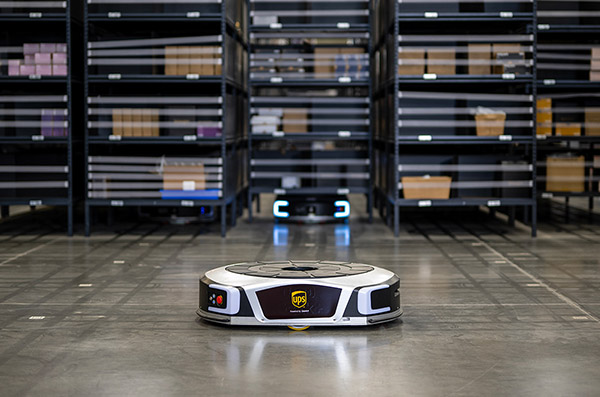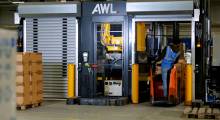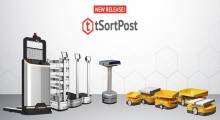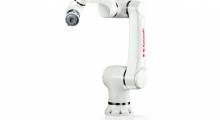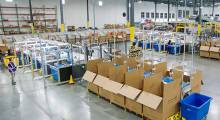United Parcel Service of America Inc. yesterday listed the ways in which it is using technology to improve package flow and the overall efficiency of its network. UPS also described its use of robotics and automation to reduce repetitive tasks and physical stress for its employees.
Founded in 1907, the company claimed that it has a long history of driving innovations for logistics. Atlanta-based UPS noted that its use of automation and digital technologies has accelerated with advances in artificial intelligence.
“UPS has been a technology company since its founding. Innovation is in our DNA,” stated Carol Tomé, CEO of UPS. “We continuously look for ways to leverage technology to improve our employee experience and increase efficiency. This is how we build a better and bolder UPS that will continue to be customer-first, people-led, and innovation-driven for years to come.”
UPS targets specific tasks for automation
This year, UPS said that 57% of the packages processed through its network went through automated facilities using the latest sorting, processing, and data-capture technologies. The company added that its major air facilities include package-flow automation and that its embrace of cutting-edge technologies advance its business and the logistics industry as a whole.
Recently, UPS made several improvements in its operations targeting specific processes that can be repetitive and physically demanding such as pick and place, loading and unloading, and moving irregularly sized shipments.
UPS is using pick-and-place technologies from Dexterity, Fortna, and Plus One Robotics to help employees sort small packages. That task requires repetitive motion and can be inconsistent as it flexes with customer demands.
Once implemented, the technology will make these jobs easier, safer, and offer a better overall experience for UPS employees, said the company.
UPS is also using Pickle Robot’s unloading technologies to ease the challenging job of unloading trailers, making the role less physically demanding for employees and delivering better package care and reliability for customers.
UPS is using autonomous guided vehicles (AGVs) powered by Dane, Geek+, Locus Robotics, Crown Equipment, and Toyota-Raymond to simplify demanding jobs. Many of these AGVs can move small packages and irregular-sized shipments more safely and easily through UPS facilities, noted the logistics provider.
Irregular shipments that don’t fit on conveyor belts can often be heavy and difficult to move, said UPS. These automated vehicles can “exponentially streamline these movements and promote safety,” it claimed.
Digital technologies part of competitive strategy
UPS said it is also using digital technologies to ensure the safety of every delivery around the world by using Delivery Photo and Delivery Defense to decrease fraud for customers. The company said it is using these innovations today in select facilities across the U.S. as it continues to execute its strategic plan.
“In providing industry-leading livelihoods for our people, we are now also using technology, innovation and automation to provide for their well-being,” said Bala Subramanian, executive vice president and chief digital and technology officer at UPS. “UPSers will always be our differentiator even as we optimize our network through technology.”
UPS said it is one of the world’s largest companies, with a 2022 revenue of $100.3 billion. Its more than 500,000 employees provide a range of integrated logistics offerings for customers in more than 200 countries and territories.
Logistics robot market expected to grow
While the growth of e-commerce demand may have slowed since the peak of the COVID-19 pandemic, third-party logistics providers (3PLs) can still use robotics to mitigate labor shortages, reported market research firms.
The global market for logistics robots could expand from $7.1 billion in 2023 to $22.6 billion by 2033 at a compound annual growth rate (CAGR) of 12.3%, estimated Fact.MR. It cited improvements in sensors, robotic platforms, and AI and the Internet of Things (IoT) as contributing factors.
Similarly, Future Market Insights forecast a CAGR of 16.5% from $8.28 billion in 2023 to $38.13 billion by 2033, propelled by worker shortages and resurgent manufacturing.
The North American logistics robot market alone could have a CAGR of more than 17% between 2023 and 2032, said Acumen Research and Consulting.
IMARC Services Pvt. Ltd. was even more bullish, predicting a global CAGR of 22.6% from $15.2 billion in 2022 to $58.6 billion by 2028 because of the need for efficiency, worker safety, and productivity.
Other 3PLs testing and rolling out robotics include DHL and FedEx Corp.
Article topics
Email Sign Up

